Programme of the winter semester 2022/23
|
|
| |
|
03.11.2022
16:15, Lecture hall C.011
Prof. Dr. Jürgen Schmidt
(FU Berlin)
Constraining the Age of Saturn's Rings with Data from the Cassini Cosmic Dust Analyzer
Saturn's rings consist of nearly pure water ice although they are subject to a steady influx of refractory material in form of interplanetary dust. Hence, knowledge of the rings' non-ice fraction and of the interplanetary flux allows to contstrain the ring age. The non-ice fraction has been measured by the radar of the Cassini orbiter (NASA/ESA) at Saturn. Here I report on the determination of the interplanetary mass flux with the Cosmic Dust Analyzer Instrument at Saturn and the implications for the age of the rings.
Bio: I graduated in theoretical physics at the University of Saarbrücken and obtained the PhD at the University of Potsdam, where I began to work with the team of the Cosmic Dust Analyzer instrument onboard the Cassini mission. In 2012 I accepted a position at the University of Oulu, Finland, where I worked since 2015 as Professor of Astronomy. In Summer 2021 I joined the planetary science group at the institute of geological sciences of the FU. My research interests center around solar system dynamics, with a special focus on the physics and distribution of interplanetary and circumplanetary dust. I am a co-investigator of the Surface Dust Analyser instrument on the Europa Clipper mission (NASA) and of the JANUS camera on the JUICE mission (ESA) to the Jupiter system.
Invited by: Frank Postberg
|
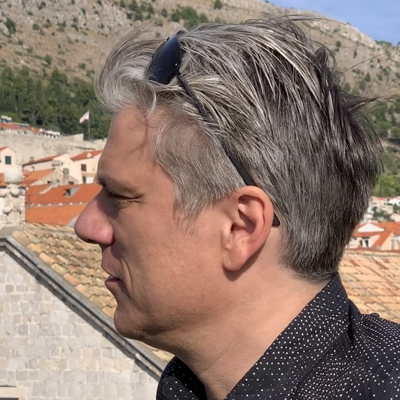 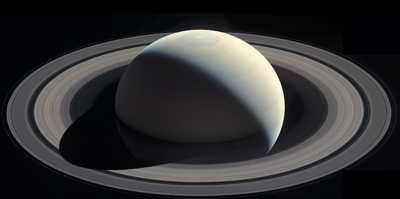
|
| |
|
10.11.2022
16:15, Lecture hall C.011
Prof. Alissa Kotowski
(Utrecht University)
Subduction and return flow recorded in the Cycladic Blueschist Unit exposed on Syros Island, Greece
The mechanical and thermal properties of the deep subduction interface are poorly constrained, but are crucial for understanding long-term evolution of plate boundary systems. I will present observations from exhumed high-pressure/low-temperature metamorphic rocks on Syros Island (Cyclades, Greece) to reconstruct the pressure-temperature-time history and internal architecture of an Eocene subduction shear zone. These results shed light on the thermal structure, deformation style, and mechanisms and rates of exhumation of these world-famous rocks.
Bio: Alissa earned her Ph.D. from the University of Texas at Austin (USA) in 2019. After that, she did a two-year postdoctoral fellowship at McGill University in Montreal (2019-2021) before moving to Utrecht, the Netherlands to begin as an Assistant Professor in December 2021. She studies the structural, thermal, and rheological evolution of subduction interface shear zones using exhumed metamorphic rocks. Her research combines field observations, high-resolution electron and x-ray microscopy, geochronology, and rock and mineral deformation experiments.
Website: https://sites.google.com/view/alissakotowski/
Invited by: Timm John
|
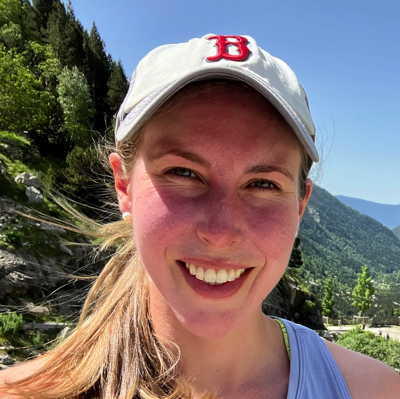 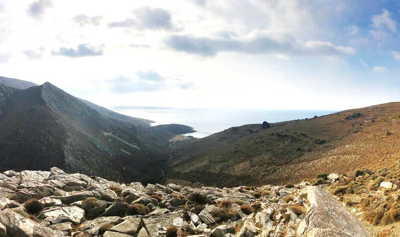 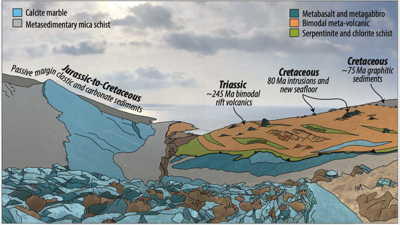
|
| |
|
17.11.2022
16:15, Lecture hall C.011
Prof. Silvio Ferrero
(Università degli Studi di Cagliari)
One drop at a time: investigating nanorocks and other tiny droplets to unravel crustal anatexis
Nanogranitoids, i.e., anatectic melt inclusions, and fluid inclusions in partially melted metamorphosed rocks are gateways to study deep melts in their source region. These inclusions are minute, often ≤25 microns, and occur in refractory phases such as garnet. They provide in situ hard data on a wealth of aspects of crustal differentiation through geological times, such as melt-producing reactions, the role of volatiles in crustal reworking, melt behaviour on crystallization, as well as on S-type magmatism and ore formation.
Bio: I earned my Phd in 2010 with Bernardo Cesare (Padova), who introduced me to anatexis and nanogranitoids. I then worked as a “micropetrologist of inclusions” on diverse aspects of crustal evolution at UniPotsdam, as Alexander vonHumboldt fellow and DFG fundee. Since arriving in Cagliari in 2021, I target microstructures in plutonic rocks to clarify post-collisional magmatism in the Variscan chain.
https://www.unica.it/unica/en/ateneo_s07_ss01_sss01.page?contentId=SHD353158
Invited by: Timm John
|
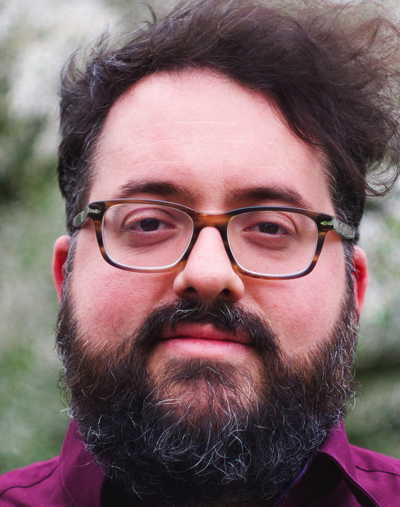
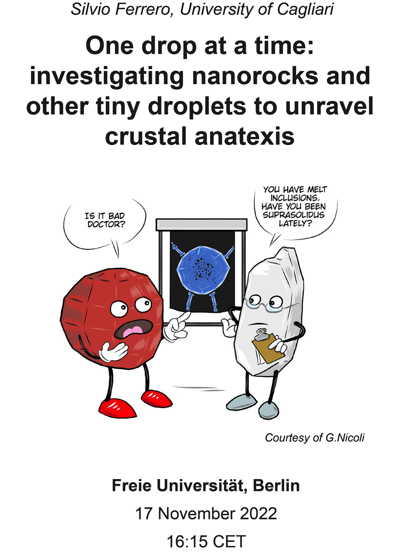
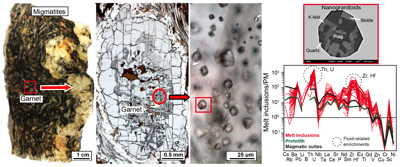
|
| |
|
24.11.2022
16:15, Lecture hall C.011
no lecture today
|
|
| |
|
01.12.2022
16:15, Lecture hall C.011
Dr. Daniel Rebstock
(Technische Universität München)
Der Seeton im Voralpenland - Von den Grundlagen der Erkundung bis hin zu baupraktischen Herausforderungen
Im Zuge des Neubaus der Westtangente Rosenheim wurde ein Brückenbauwerk erforderlich, der in dem hier betrachteten Hauptteil als flach abgespannte Schrägseilbrücke mit einer freien Spannweite von etwa 100 m über die Mangfall führt. Die Schwierigkeit bei der Gründung der beiden Pylone bestand in den am Standort mit einer geschätzten Mächtigkeit von etwa 150 m anstehenden sog. Seetone, einem strukturempfindlichen weichen Boden, in dem keinerlei Erfahrungen mit Pfahlgründungen vorlagen. Eine erste Pfahlprobebelastungskampagne zeigte diese Problematik klar auf, erst mit einer zweite Kampagne konnten vergleichsweise geringe Pfahltragfähigkeiten nachgewiesen werden. Eine Kombination aus eine Bohrpfahlgründung mit einer Baugrundverbesserung führte zu der geplanten Gründungsvariante einer schwimmenden Gründung. Während die Nachweise nach der Norm nur teilweise geführt werden konnten, zeigte die durchgeführte Verformungsprognose mit Hilfe einer FE-Simulation weitgehend verträgliche Setzungen. Im Zuge der Bauausführung zeigte das geotechnische Monitoring für die Herstellung der Mischgründung deutlich größere Verformungen, für den eigentlichen Rohbau der Brücke hingegen deutlich geringere Setzungen, so dass das Gründungskonzept hier als erfolgreich angesehen werden kann. Um den Unterschieden weiter auf den Grund zu gehen, wurde ein Forschungsvorhaben bei der Bayrischen Forschungsstiftung mit zahlreichen Industriepartnern initiiert: SEBRO - Effizientes und nachhaltiges Bauen auf strukturempfindlichem Untergrund (sebro.gbft.ed.tum.de).
Bio: Studium des Bauingenieurwesens an der Universität Karlsruhe (TH), Vertiefungsrichtung Geotechnik, anschl. Wissenschaftlicher Angestellter am Institut für Bodenmechanik und Felsmechanik, Universität Karlsruhe (TH) (2004 bis 2011), Projektingenieur bei dem Ingenieurbüro Smoltczyk & Partner in Stuttgart (2011-2016), ab 2011 Zentrum Geotechnik, Technische Universität München, Projekt- bzw. Gruppenleiter AG Numerik Stoffgesetze Bodendynamik
https://www.cee.ed.tum.de/gbft
Invited by: Theresa Frommen
|
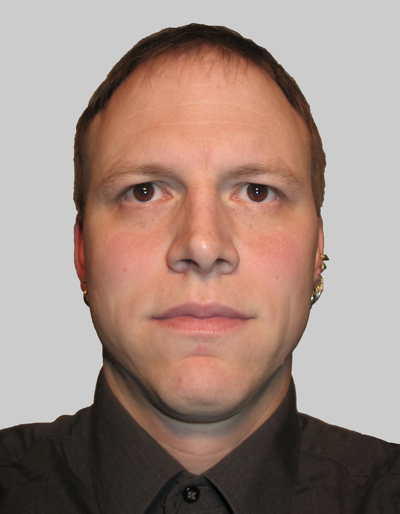 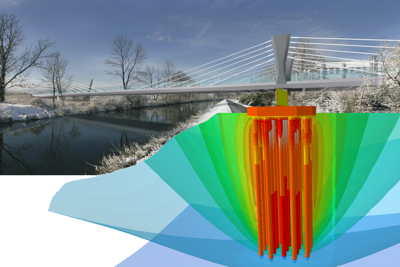
|
| |
|
08.12.2022
16:15, Lecture hall C.011
Prof. Dr. Marc Hirschmann
(University of Minnesota)
Earth's redox dynamics, from the magma ocean to the present
Earth’s mantle has been oxidized compared to its cosmochemical building blocks since the early Hadean. This oxidation is linked to Earth’s early differentiation, including processes in early magma oceans, but these remain poorly understood and quantified. During its subsequent evolution to the present, Earth has developed a substantial oxidized surface reservoir that amounts to approximately 20% of the oxidative power of the accessible Earth (i.e., the whole Earth apart from the core). This surface reservoir is essential to the modern surface environment, but originates largely from the mantle and this coupled surface-interior redox evolution is poorly quantified. It has created domains with distinct redox states sampled by oceanic and mid-ocean ridge basalts. In this talk I will consider models and experiments that aid understanding of the redox evolution of terrestrial planets and Earth’s subsequent deep planetary redox cycling.
Biographical Information
- Experimental petrology, igneous geochemistry, deep Earth volatile and redox cycles, accretion and differentiation of terrestrial planets. Robert & Carol Gunn Professor of Earth Sciences, University of Minnesota
- Alexander von Humboldt Stiftung Forschungpreis 2022-2023 (Bayreuth, FU Berlin)
- A.B. University of California, Berkeley, M.S. University of Oregon, Ph.D. University of Washington, post-doctoral fellow, Caltech
- Fellow: American Geophysical Union, Mineralogical Society of America, Geochemical Fellow (Geochemical Society+European Association of Geochemists), American Academy of Arts and Sciences, Bowen Award (AGU-VGP), Dana Medal (MSA), Member, National Academy of Sciences USA
Invited by: Harry Becker
|
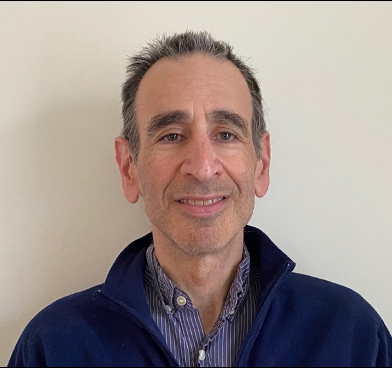 |
| |
|
15.12.2022
16:15, Lecture hall C.011
Prof. Donna Whitney
(University of Minnesota )
Domes from deep: crustal flow and the stabilization of continents
In continental collision zones, domains of deep, hot continental crust have rapidly exhumed to within a few kilometers of the Earth’s surface. The dominant rock type is a quartz- and feldspar-rich rock (gneiss) that does not record its deep origins. However, less reactive rocks that occur within gneiss may record the deep history. These fragments can also be used to track the magnitude and pathway of flow of deep crust before it rises towards the Earth’s surface.
Bio: I am part of the Structure, Tectonics, and Metamorphic Petrology (STAMP) group at the University of Minnesota (USA). We integrate field studies with analytical, experimental, and numerical modeling to investigate the metamorphism and deformation of continental and oceanic lithosphere. My PhD is from the University of Washington.
Invited by: Timm John
Live event starts on Thursday at 16:15.
Live video conference: https://bbb.planet.fu-berlin.de/b/geo-gzn-j9j-yc4
We will open the video conference room for log-in at 16:00.
Questions from online participants are welcome, via audio or the chat function.
We will use BigBlueButton, an OpenSource video-conference solution, hosted at the FU Geosciences dept. by the section Planetary Sciences and Remote Sensing
If you don’t know BigBlueButton yet, you may want to watch some introductory videos here: https://bigbluebutton.org/html5
In case that BBB fails, we will try to use WebEx, see link below:
https://fu-berlin.webex.com/fu-berlin-en/j.php?MTID=m939e56af5a0eae7e678a9ed81f431ae9
Meeting number: 2730 581 2499
Password: BkF45nKvEP4
|
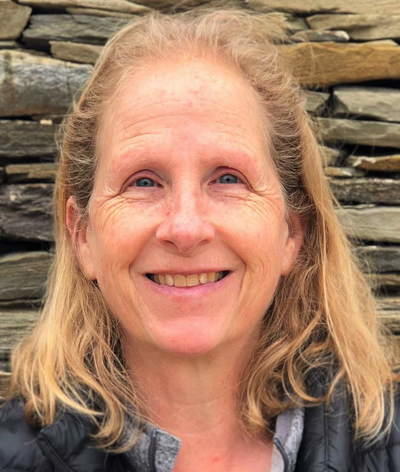
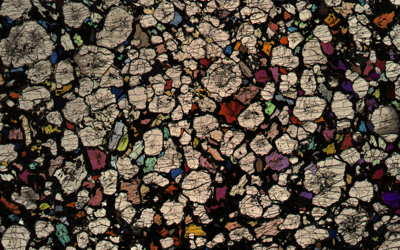
|
| |
|
05.01.2023
no colloquium talk
|
|
| |
|
12.01.2023
no colloquium talk
|
|
| |
|
19.01.2023 - postponed to 11.05.2023
Prof. Mary Ford
(CRPG, Université de Lorraine, France)
Invited by: Le Breton, Eline
|
|
| |
|
26.01.2023
16:15, Lecture hall C.011
Prof. Dr. Stefan Buske
(TU Freiberg)
Seismic imaging in the crystalline crust: challenges and advances
Seismic imaging of the Earth’s crust is a particularly challenging task in the presence of crystalline rocks. Strong near-surface velocity gradients, small-scale heterogeneities, low impedance contrasts, steeply dipping structures as well as sparse and irregular acquisition geometries lead to complex data sets with often low signal-to-noise ratios. We show approaches how to tackle these challenges with examples from major crustal fault zones and the presence of seismic anisotropy.
Bio: Diploma and PhD from Johann-Wolfgang Goethe University Frankfurt; 1998-1999 Depth Imaging Department at Ensign Geophysics (UK); 1999-2010 Head of Seismic Laboratory at Freie Universität Berlin; since 2010 Professor of Applied Geophysics at TU Bergakademie Freiberg.
Research interests: development of seismic processing, modeling, inversion and imaging methods and their application to the lithosphere. https://tu-freiberg.de/geophysik/research/seismicsseismology
Invited by: Stine Gutjahr
Live event starts on Thursday at 16:15. We will open the video conference room for log-in at 16:00.
Video of the lecture available online
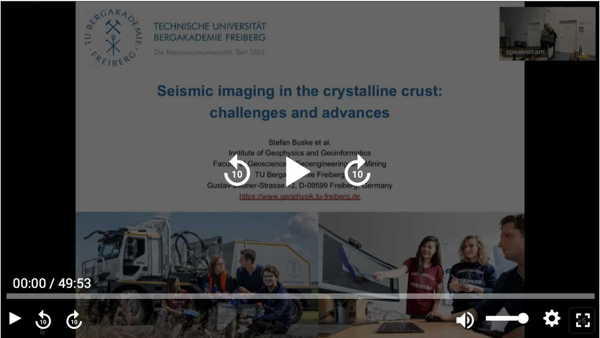
|
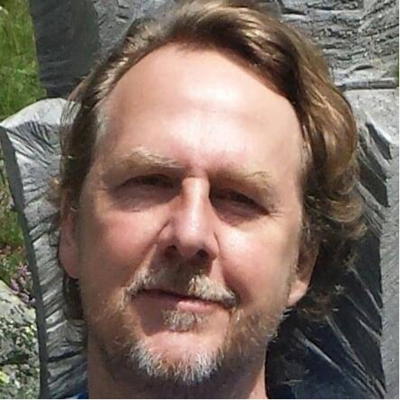
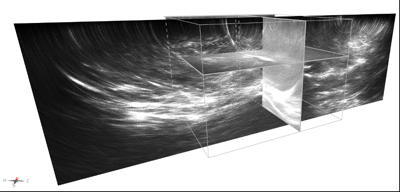
|
| |
|
02.02.2023
Prof. Dr. Friedhelm von Blanckenburg (Freie Universität Berlin and GFZ Potsdam)
Filmpremiere im FU-GeoKolloquium:
A Rock Murder Mystery. What Happens Deep Beneath Earth’s Surface?
(English version of: Mordsache Stein. Was passiert tief unter der Erdoberfläche?)
An unbelievable murder case is discovered in a storage facility. Rocks have been murdered! Detective Hercule Poirot takes up his investigation. An group of young international Geo-scientists sets off in search of the "perpetrators" in scenic landscapes of Chile. They find evidence of the crime in Potsdam research laboratories – and present a surprising solution.
The scientific backdrop of the movie is a geologic drilling campaign that we conducted along a climate gradient within the DFG-funded priority program “Earthshape – Earth Surface shaping by biota”. In the Chilean Coastal Cordillera granitoid rocks have been subject to unexpectedly deep weathering. We explored potential causes: tectonic fracturing, water flow, chemical reagents or microbes. The movie explains the scientific method: hypotheses cannot be proven. They can only be falsified – like providing an alibi in a criminal investigation.
View previous movies from the programme on our You Tube channel: "EarthShape - Earth Surface Shaping by Biota".
Programme page: DFG priority program SPP 1803: EarthShape: Earth Surface Shaping by Biota
|
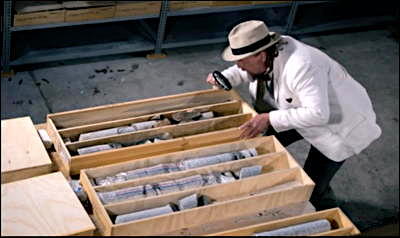 |
| |
|
09.02.2023
16:15, Lecture hall C.011
Dr. Alexander M. Prent
(Curtin University, Perth)
An example from down under: Bringing the Australian geochemistry community together
During my visit in Berlin I will share with you how geochemical laboratories in Australia were brought together into a national network of geochemical research infrastructure providers. I will talk about how AuScope, Australia’s national geoscience infrastructure provider is instrumental in funding a new data infrastructure project. The start of the seminar will highlight the development of the AuScope Geochemistry Network and will continue with how coordinating that initiative evolved into my current role and global developments in geochemistry data initiatives.
After my geology BSc and MSc at Utrecht University, the Netherlands, I worked there for a year as a junior lecturer. I then went on to do a PhD in geochronology and geochemistry at Curtin University, Perth, Australia. I remained at Curtin as postdoc to coordinate the AuScope Geochemistry Network for 3.5 years. Since August 2022 I now coordinate the OneGeochemistry initiative.
Homepages:
https://codata.org/initiatives/decadal-programme2/worldfair/onegeochemistry-wg/
https://zenodo.org/communities/onegeochemistry/?page=1&size=20
https://www.earthchem.org/communities/onegeochemistry/
Invited by: Elfrun Lehmann
|
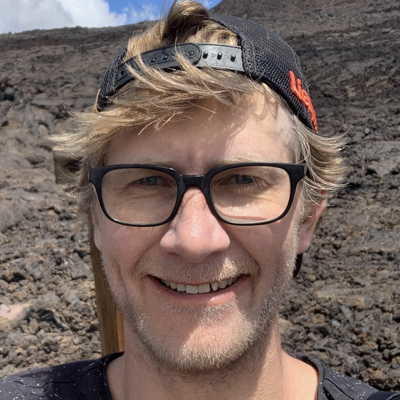
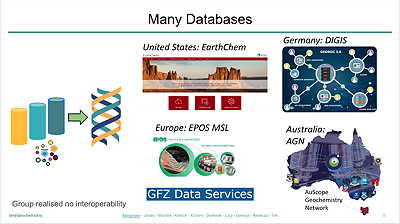
|
| |
|
16.02.2023
16:15, Lecture hall C.011
Dr. Angela Landgraf
(Nagra, Nationale Genossenschaft für die Lagerung radioaktiver Abfälle)
Ice-age 2.0 – how to protect radioactive waste for one million years
High-level radioactive waste requires to be stored securely for one million years – a timespan longer than the existence of Homo Sapiens and a timeframe far beyond present climate models showing global warming. I will introduce the Swiss sectoral plan for a deep geological repository and the 2022 decision of the best suitable site. Afterwards, I will address the main aspects of erosion, including drivers and processes and considerations of their uncertainties. Teaser: glaciers shall return but might do so delayed!
I have a long history with the University of Potsdam, including PhD, Postdoc, as well as research and teaching assistant. My research brought me to Iran, Kyrgyzstan, Mongolia, and Argentina to study the landscapes’ tectonic evolution and paleoseismology. In 2017, I joined Nagra as program leader for geological long-term evolution – where we project landscape evolution into the far future.
Invited by: Anne Bernhardt
Live event starts on Thursday at 16:15. We will open the video conference room for log-in at 16:00.
Questions from online participants are welcome, via audio or the chat function.
Link to Livestream: WebEx: https://fu-berlin.webex.com/fu-berlin-en/j.php?MTID=mfbb7e31e2c32693a41be2b4d15218eb9
Wednesday, 25 Jan, 2023 16:00 | 2 hours | (UTC+01:00) Amsterdam, Berlin, Bern, Rome, Stockholm, Vienna
Meeting number: 2730 786 5565, Password: JmfG5PMRX58
In case of problems with WebEx, we might use this video conference: https://bbb.planet.fu-berlin.de/b/geo-gzn-j9j-yc4
|
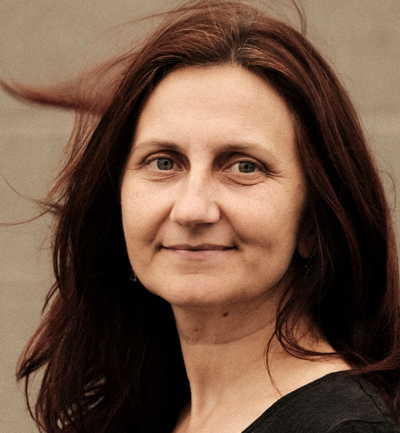

|
The programme and lecture information are distributed via the colloquium mailing list: https://lists.fu-berlin.de/listinfo/geokolloquium.
You can subscribe to the list yourself via the link. We usually send out the announcement of the lectures at the beginning of the week in which a lecture takes place, as well as a short reminder on the day of the lecture, nothing more.
Über die Kolloquiums-Mailingliste werden das Programm und Vortragsinfos verteilt: https://lists.fu-berlin.de/listinfo/geokolloquium.
Sie können sich über das Link selbst zur Liste anmelden. Wir verschicken die Ankündigung der Vorträge meist am Anfang der Woche, in der ein Vortrag stattfindet, sowie eine kurze Erinnerung am Tag des Vortrags, mehr nicht. |
|
| |
|






















